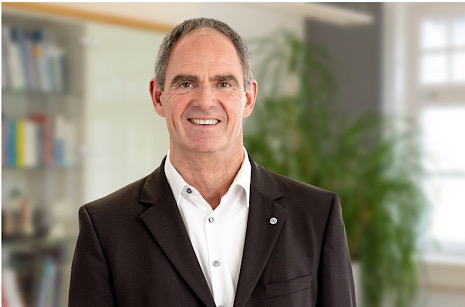The following interview has been contributed by VDMA based on the series of K 2022 exhibition.
*******
Way2K: Industry interviews in the lead-up to the K 2022 fair
“Technology is key for the circular economy”
Interview with Prof. Dr. Martin Bastian, Head of SKZ – Kunststoff-Zentrum
Prof. Dr Bastian, in what way does the SKZ support companies in the plastics industry regarding circular economy questions?
Our SKZ research and development for example, is focused on trying to develop better Design for Recycling solutions. It’s about designing products for easier reuse. Today, there are still many products that are very difficult to recycle. In addition, we support companies in improving their processing technology, for example when it comes to processing production waste. Additionally, we also constantly conduct research in the field of material and product development, based on the secondary plastics available at the time.
Do you also develop cross-company solutions?
Yes, that’s something we do as well. For some years now, we have been working extensively on the question of how to use digital technologies, for example artificial intelligence, to better match the demand and availability of secondary plastics. Up until now, it’s often the case that plastic waste, which is secondary raw material, accumulates somewhere, but no one knows the locations or the quantities. On the other hand, there is no knowledge of where a certain quantity is needed. We are working on creating digital platforms that can connect suppliers with consumers.
So it’s about sharing knowledge?
It is very important to convey any existing knowledge about the circular economy in the world to companies. Where do you source the secondary goods? How do you get the product certified? How can you get important customer sectors, such as the automotive industry, to buy products even though they contain a – sometimes significant – percentage of recycled material? It is very important for us to get this knowledge across to people.
Design for Recycling is currently about how to turn recycled material back into high-quality products: from a film back into a film. How far are you in that regard?
The example of film is often cited, but film accounts for only a fraction of the plastics consumed in the world. By far the most plastic is used for other products. For this reason, it is all the more important to ask how materials that have already been used can be processed in such a way that they can be used again to make sophisticated products. Another question however is where to apply materials that are perhaps not entirely like a new product. In the building sector for example, there are many thick-walled products. It is possible to use materials that are not one hundred per cent like new materials as multi-layer composite systems on the inside of many of these products.
What is the role of technology in establishing the circular economy?
Without further technological developments, we will not succeed in transforming the linear economy into a circular one. For example, we need better technologies to process materials and refine sorting techniques. The use of digital technologies must also increase. I have already mentioned the example of the platform for supply and demand of secondary materials. But all this must then also be implemented in the companies. For me, technology is of central importance. We have already made very good progress in this area in recent years, but are still a long way from where we want and need to be.
Could we do without oil as a raw material in a completely closed cycle?
I am convinced that we can achieve this, but it can only be realized through technology. For years, global plastic consumption has been increasing by about 4 percent per year. Even in a closed cycle, plastics have to come from somewhere, and consumption will continue to rise because more and more people are living in affluence. For this 4 percent, you can use crude oil, but also renewable raw materials. We can however also aim for simply using less material by applying new technologies, and the little left that is still required can be provided by renewable raw materials.
If you closed the loop and could manage without oil, would that improve the image of plastic in the industrialised world?
In that event, plastic would be even more the material of the future. But the image will only improve if we verifiably conserve resources; we verifiably have to reduce emissions, especially greenhouse gases. We must also verifiably lower plastic emissions that are harmful to the environment, and we must do so very significantly. Our task as the plastics industry is to create solutions that enable everyone to understand plastic as a valuable material, and to use it accordingly.
Press contact
VDMA | Ina Vettkötter | +49 69 6603 1844 | ina.vettkoetter@vdma.org












